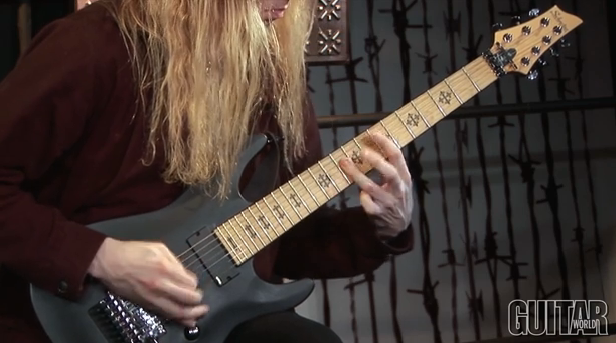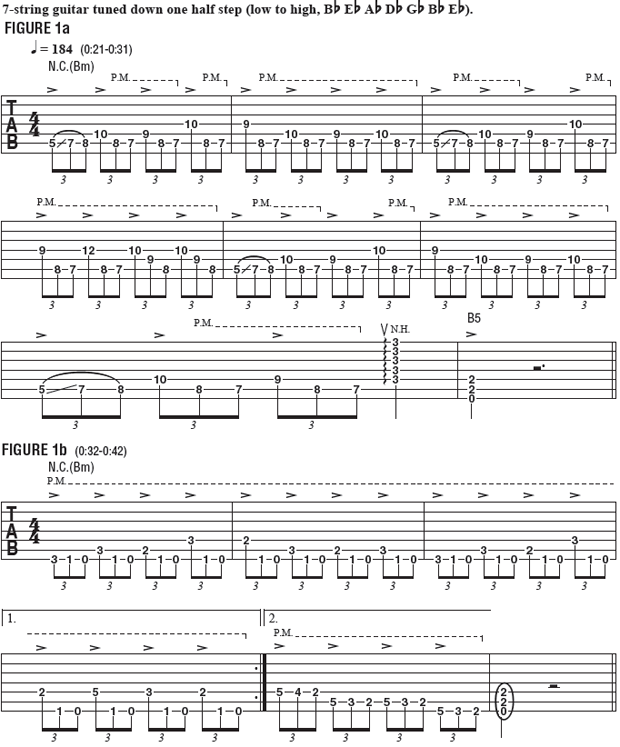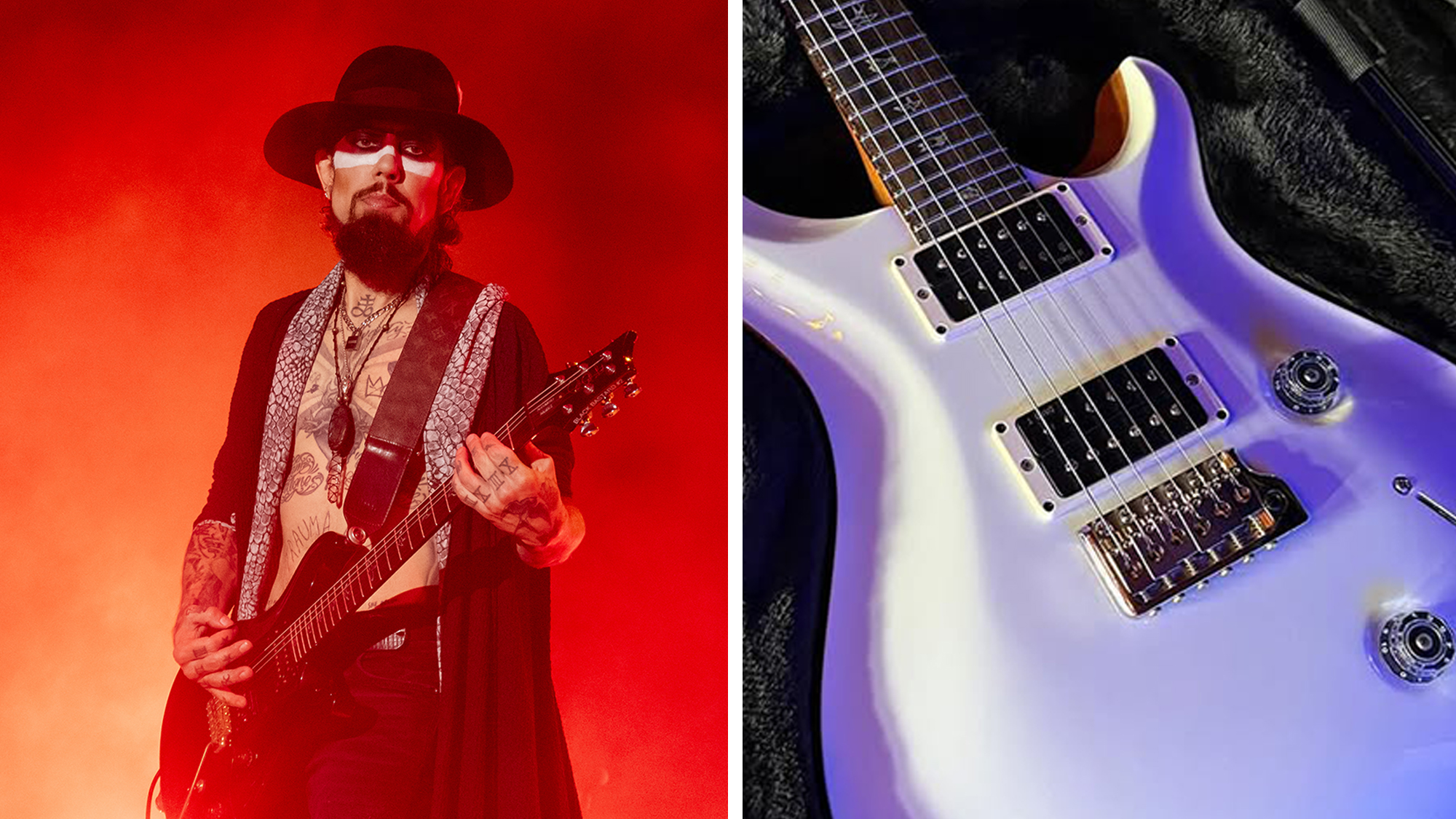Merchant of Menace with Jeff Loomis: Godless Hammer-Ons —How to Play "The Obsidian Conspiracy," Part 2

Last month, we looked at the intro rhythm parts and the intro guitar solo to the title track of the latest Nevermore album, The Obsidian Conspiracy.
This month, I’ll go over the remaining single-note intro theme and primary verse riff. As you’ll see, the latter is a lower-octave version of the final intro lick.
A reminder: “the Obsidian Conspiracy” is played on seven-string guitar, tuned down one half step (low to high, Bb Eb Ab Db Gb Bb Eb). This final intro riff, shown in FIGURE 1a, is built on successive eighth-note triplets and is played entirely on the sixth, fifth and fourth strings. It’s also a little bit tricky for both the pick- and the fret-hand.
Let’s begin with the fret-hand. I start the riff on the low E string by sliding my index finger up from the fifth to the seventh fret and hammer onto the eighth fret with the middle finger. On beat two, I fret the G note on the a string’s 10th fret with the pinkie, followed by the eighth to seventh frets, C to B, on the E string, fretted with the middle and index fingers, respectively. From here through the end of bar 2, my index finger stays rooted in seventh position.
On beat three, the note on the a string is lowered one fret, to the ninth fret, followed again by C to B on the E string. This 10th-to-ninth fret movement is then moved one string higher, to the D string, followed with a string skip back to C-to-B on the low E string. Notice that throughout the majority of the rest of the riff, the first note of each eighth-note triplet changes while the C-to-B figure on the E string repeats each time.
Bar 3 is a restatement of bar 1, and beat one of bar 4 begins in the same manner as bar 2. On beat two, a wide stretch is necessary, as I reach up to the 12th fret on the a string with the pinkie, followed again by notes on the eighth and seventh frets on the low E. the bar ends with the repeated C-F#-C tritone shape (a tritone is two notes that are three whole steps apart).
Now let’s look at the pick-hand articulation of FIGURE 1a. It’s very important to accentuate the first note of each eighth-note triplet. The tricky part is that some of the accents are sounded with down strokes while others are sounded with upstrokes.
Get The Pick Newsletter
All the latest guitar news, interviews, lessons, reviews, deals and more, direct to your inbox!
I begin with a downstroke and then sound the first note of beat two with another downstroke. From here through the end of bar 2, I alternate (down-up) pick throughout, so the successive triplet figures are picked DOWN-up-down, UP-down-up, DOWN-up-down, UP-down-up, etc.
Bar 3 and the first two beats of bar 4 are picked as previously described. For the tritone shapes across beats three and four of bar 4, however, i switch from alternate picking to economy picking (down-down-up, or up-up-down). in this example, the picking pattern for the tritone shapes is DOWN-up-down, DOWN-up-down. using repeated downstrokes in this way creates a stronger and more forceful accent on each downbeat.
For the verse riff in “the Obsidian Conspiracy,” shown in FIGURE 1b, I transposed the riff from FIGURE 1a down one octave, with a few slight variations. let’s begin with a look at the fret-hand. The riff starts a little differently, with an initial three-note descending figure on beat one, but all of the subsequent eighth-note triplets through bars 1 and 2 are the same as FIGURE 1a, just played one octave lower.
As for the pick-hand, I begin FIGURE 1b with a downstroke and use alternate picking throughout the rest of the riff. This results in the use of an upstroke on beats two and four of every bar. The riff culminates in bar 5 with a descending run based on the Baeolian mode (B C# D E F# G A).
As you can see, FIGURES 1a and 1b offer distinct challenges, so play through them very slowly and deliberately at first, with close attention paid to pick stroke direction. Next month we’ll look at the guitar solo.











